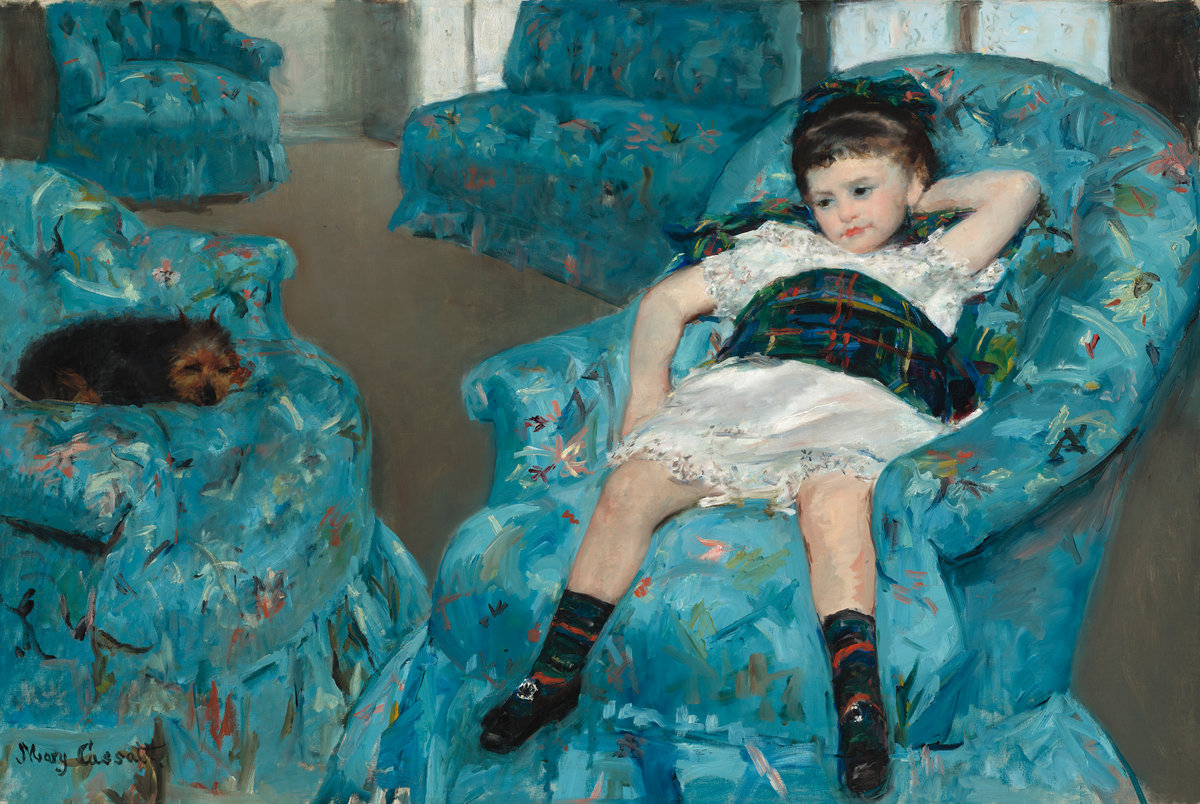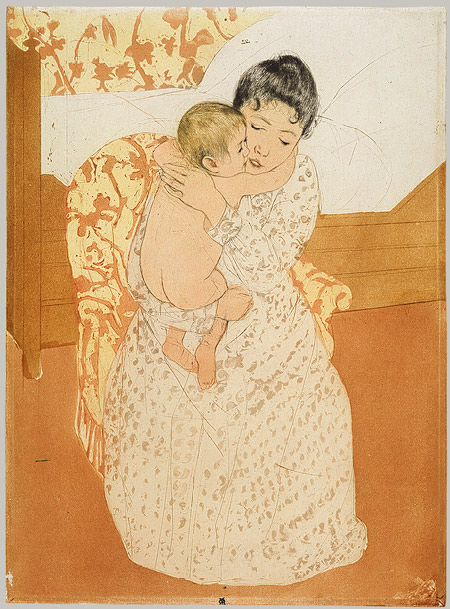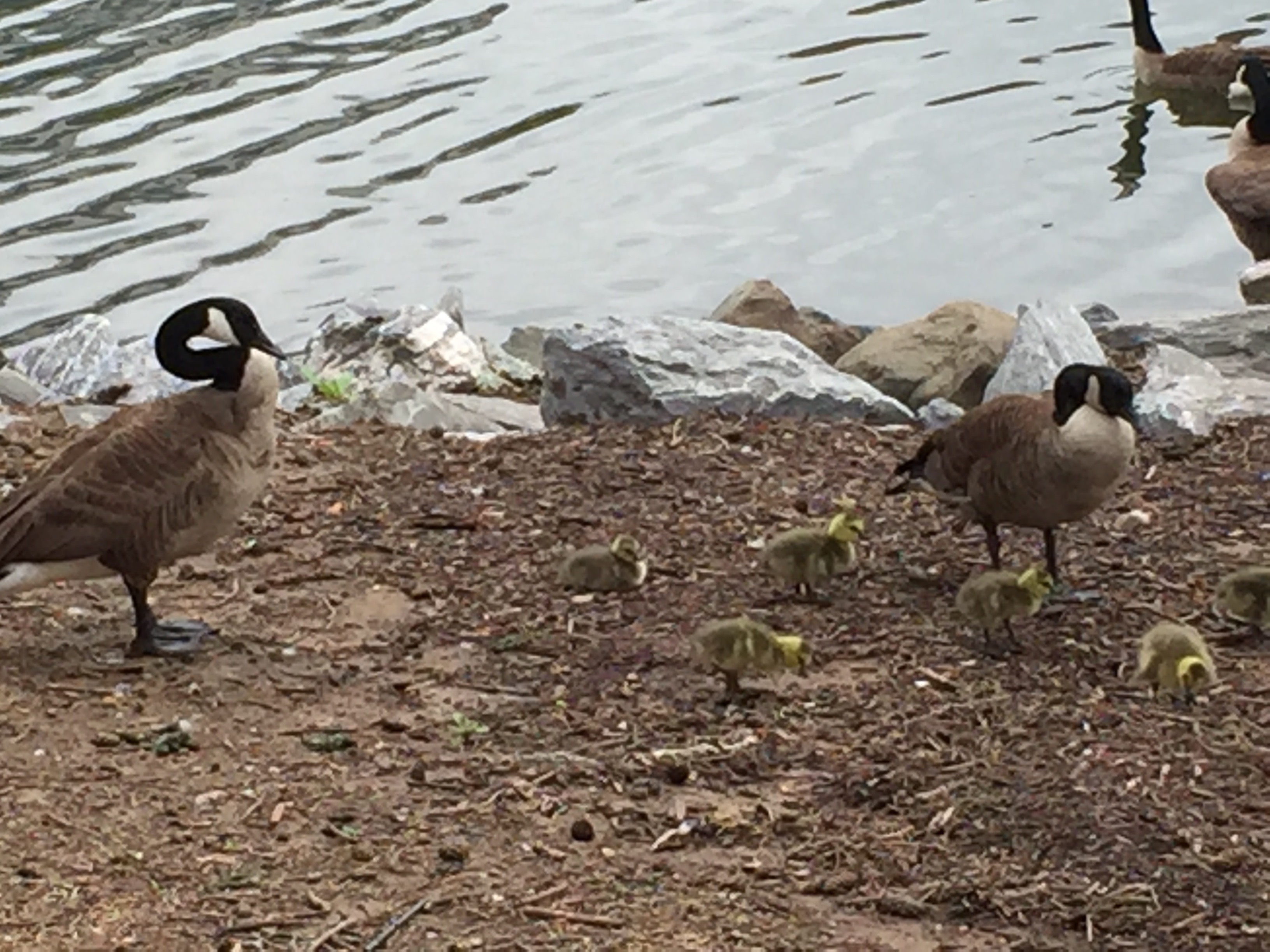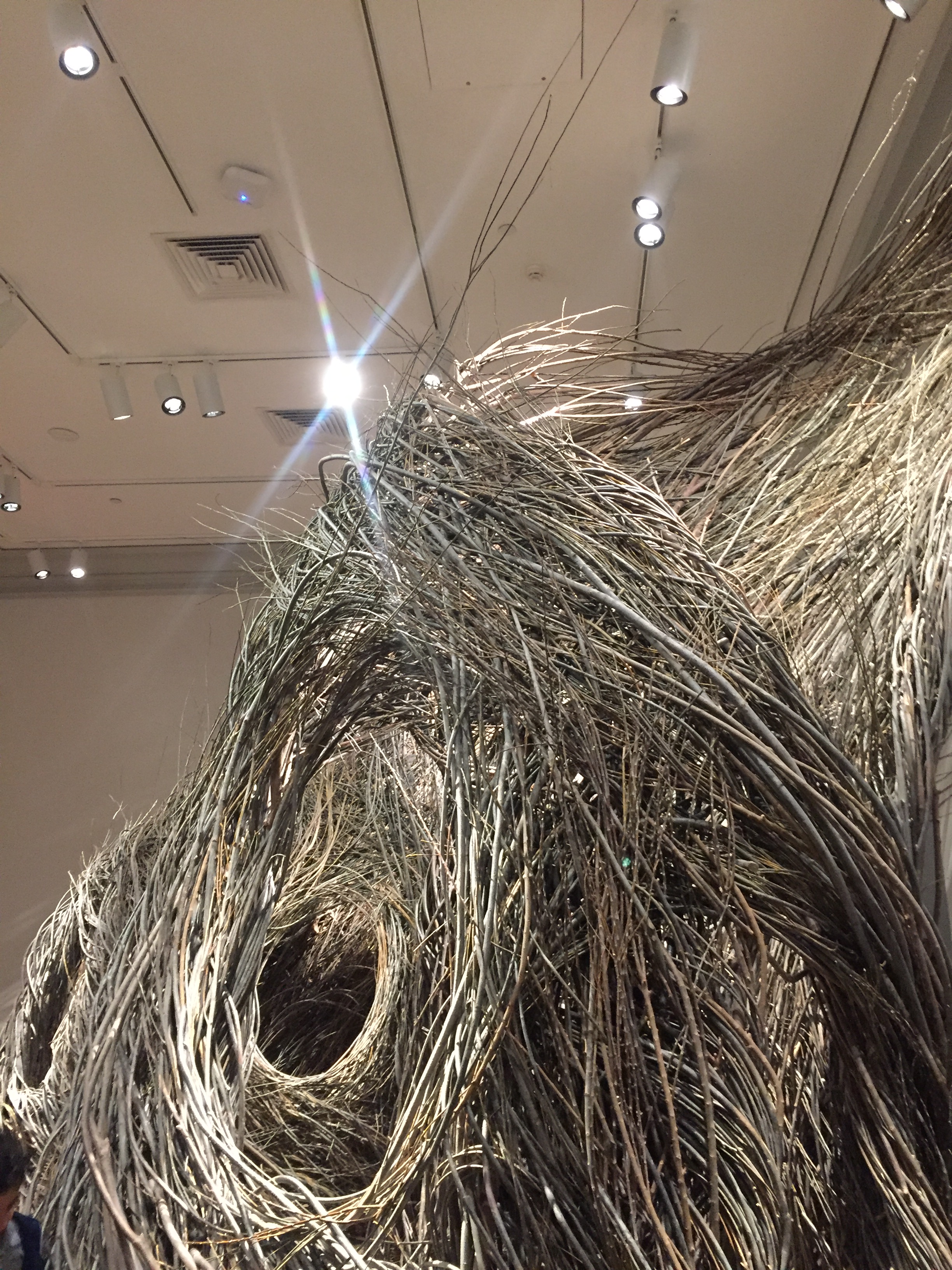Art is good for kids and kids are good for art. While art usually hasn’t treated kids with a lot of respect, Mary Cassatt is one of the few artists who portrayed children in her art in an less-restricted manner. So when I saw a poster about an exhibit of her art at the National Gallery, I was eager to go.
What I like the most about Cassatt is that she painted people as they are, not how she wanted them to be. Historically, art has portrayed children as small adults, stuffing them in tiny formal clothes in stiff positions with blank or very serious expressions. (In some medieval art, baby Jesus is outright creepy.) Many of them look like zombie children or possessed dolls. In fact, a critic contemporary to Cassatt said that most artists of the time put mothers and children in “stupid and pretentious poses.”
In contrast, Cassatt – like many of the Impressionists – was interested in painting “real people.” Cassatt’s paintings often capture children’s lack of decorum. In what’s probably her most famous painti ng, Little Girl on a Blue Armchair, a young girl is dressed in her Sunday best and absolutely sprawled out on the living room furniture. With her dog perched on a nearby chair, she looks out at the viewer with a relaxed but vaguely bored look: “What? I’m comfortable.” From her pose to her expression, she’s the opposite of a proper Victorian lady, but so much like the little girls we know in real life.
ng, Little Girl on a Blue Armchair, a young girl is dressed in her Sunday best and absolutely sprawled out on the living room furniture. With her dog perched on a nearby chair, she looks out at the viewer with a relaxed but vaguely bored look: “What? I’m comfortable.” From her pose to her expression, she’s the opposite of a proper Victorian lady, but so much like the little girls we know in real life.
Another famous painting, Girl Arranging Her Hair, shows a teenager in her dressing gown, fussing with her long hair. What I found particularly interesting about this one is that Cassatt doesn’t paint her as conventionally attractive. In fact, she’s a little homely. But Cassatt finds beauty in the ordinariness of her face and the task at hand.
The exhibit also displayed a number of her lesser-known pieces, particularly a set of prints done in a Japanese woodcut style. My favorite of these was Maternal Embrace, which  shows a woman hugging an older infant to her chest. The baby is naked, as if he or she has just come out of the bath. The mother has her arms tightly wrapped around the child, her eyes closed and head resting against the child’s cheek. It captures a moment of deep intimacy, of what I imagine to be a mother contemplating how much she loves and cherishes her child. The baby is big enough to hug tightly but small enough to be vulnerable – perhaps around 4 to 6 months. The print resonated with me, because that was a time I particularly enjoyed with Sprout. He was smiling often and giving real emotional feedback. It captures a moment that truly reflects my lived experience, in a way that art rarely does for me.
shows a woman hugging an older infant to her chest. The baby is naked, as if he or she has just come out of the bath. The mother has her arms tightly wrapped around the child, her eyes closed and head resting against the child’s cheek. It captures a moment of deep intimacy, of what I imagine to be a mother contemplating how much she loves and cherishes her child. The baby is big enough to hug tightly but small enough to be vulnerable – perhaps around 4 to 6 months. The print resonated with me, because that was a time I particularly enjoyed with Sprout. He was smiling often and giving real emotional feedback. It captures a moment that truly reflects my lived experience, in a way that art rarely does for me.
Cassatt’s empathy for children was even reflected in her art supplies; the museum had a set of her pastels on display. When she had moved on to other mediums, Cassatt gave them to one of her friend’s daughters. The accompanying plaque quotes the recipient as saying that as a little girl, she had no idea what they were worth, so she just used them to create her own art. I suspect that was exactly what Cassatt intended with the gift.
Seeing these images of children sparked my thoughts about how we portray children today. Children are portrayed more now than in any period of time, between digital cameras, smartphones, Facebook and Instagram. While the mere act of photographing our kids may inspire them to ham it up and be less genuine, I do think that most photos try to depict children’s lived lives, just as Cassatt did. Of course, they usually show our kids’ best side and not all of the whining, but they aren’t trying to turn our kids into people they aren’t.
Instead, I think sometimes where we – and I definitely include myself here – go wrong is how we interpret other people’s photos. It’s so easy to look at other people’s photo sets and forget about the 10 photos they didn’t post where their kid wouldn’t sit still or was hitting their sibling or was complaining about goodness knows what. It’s easy to forget that these are just snapshots into people’s lives and even messy places can look beautiful with the right point of view. We long to have our lives look like other people’s, forgetting that we have our own moments of honest beauty, even if we didn’t have the camera ready at that moment. Or we get mad at other people’s lives being “perfect,” even if they never claimed such a thing. We try to compare our families to fictional people that exist only on a screen. It’s like being mad at the Pinterest moms that do everything – we don’t know the whole story and it isn’t fair to either of us. Instead, we need to extend grace to ourselves and each other, finding art in the ordinary.
Art is just one way to express beauty. When we portray children, we should make it as true to them as possible, but also remember we’ve only captured just one moment of many.





 ng,
ng, 